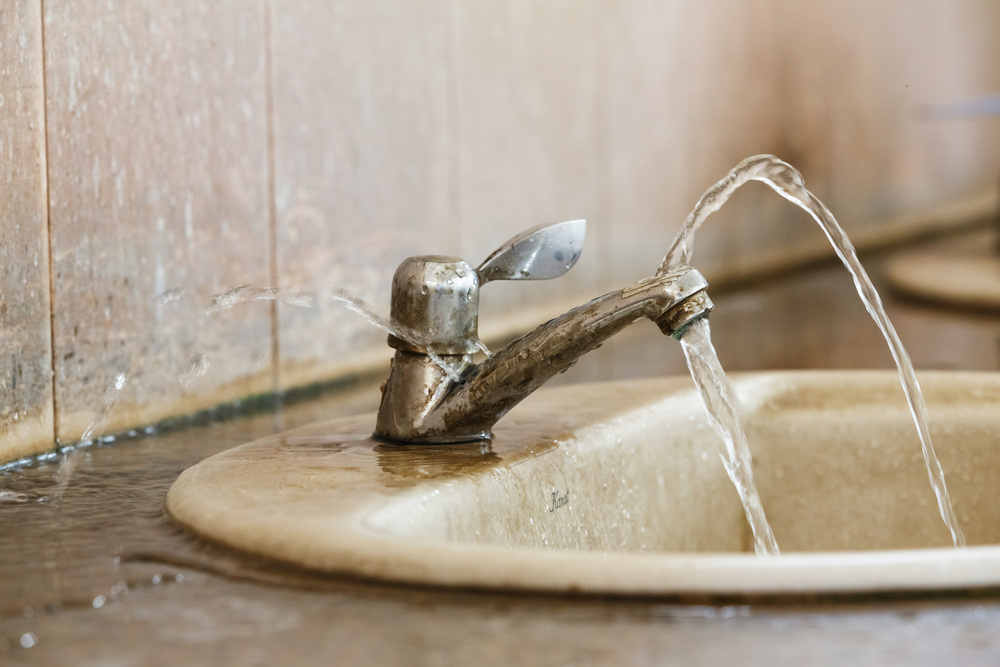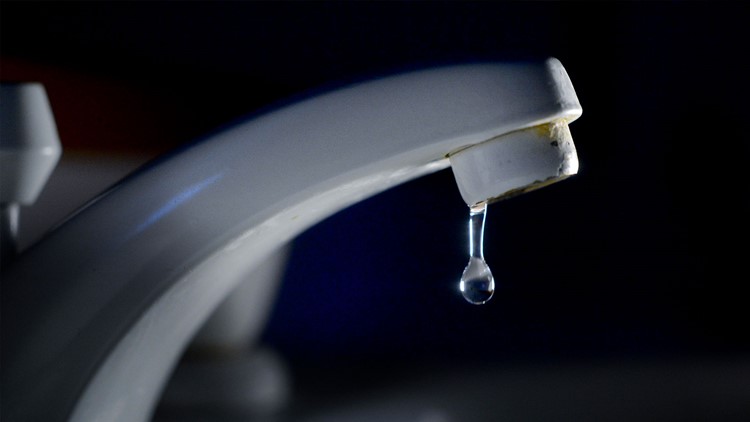When a Busted Faucet Is Relevant
Contact Us NowThe article author is making a few good points regarding Potential Health Risks Associated With Leaky Faucets as a whole in this article which follows.

Intro
A leaking faucet could appear like a minor aggravation, however its effects prolong much beyond the periodic drip. Comprehending the effects of a dripping faucet is crucial for both home owners and the atmosphere. In this write-up, we'll check out the numerous effects of this common family issue and why addressing it promptly is necessary.
Causes of Leaky Faucets
Dripping faucets can result from a variety of elements, including wear and tear, high water pressure, and corrosion. In time, the consistent use of taps can result in worn-out seals and gaskets, causing leakages to establish. Additionally, extreme water pressure can put strain on plumbing fixtures, bring about leaks. Deterioration and rust can additionally weaken tap components, making them susceptible to leakage.
Water Wastage
Among one of the most considerable consequences of a leaking tap is water waste. Also a little drip can amount to gallons of wasted water in time. This not just drives up water costs however also contributes to water deficiency and ecological deterioration. Resolving leaky taps quickly is critical for conserving this precious resource and decreasing its influence on the planet.
Financial Impact
Along with wasting water, leaky taps can additionally have a significant financial impact. Enhanced water expenses are a direct repercussion of water waste, costing house owners thousands of bucks each year. Moreover, the price of fixing water damages triggered by leaks can be significant, specifically if left neglected for an extensive duration.
Ecological Effect
The environmental impact of leaky taps expands past water waste. By conserving water, homeowners can add to wider efforts to mitigate water scarcity and shield all-natural ecosystems. Lasting options such as rainwater harvesting and water-efficient components can better minimize the environmental impact of family water usage.
Technological Solutions
Advancements in modern technology have resulted in the development of smart faucets and water-saving devices that assist minimize water waste. Smart taps utilize sensors to spot activity and adjust water circulation as necessary, decreasing waste without sacrificing ease. Water-saving tools such as aerators and low-flow showerheads are likewise reliable in saving water without jeopardizing performance.
Global Viewpoints
While leaky taps may seem like a local problem, they contribute to broader global challenges such as water scarcity and environment adjustment. In areas already encountering water stress and anxiety, every decrease counts, making leakage avoidance and fixing vital. By embracing water-saving techniques and purchasing lasting technologies, homeowners can play their part in addressing these pressing international issues.
Regulatory Procedures
Government policies play a crucial function in minimizing the impact of leaking taps and advertising water conservation. From constructing codes that require water-efficient fixtures to water-saving motivations and rebates, policymakers have a range of tools at their disposal. By carrying out and applying these laws, governments can make certain that property owners prioritize water preservation in their day-to-days live.
Community Influence
Addressing leaky faucets needs cumulative initiatives at the area degree. By elevating awareness about the significance of water conservation and offering sources for leakage discovery and repair service, regional authorities can equip home owners to do something about it. Campaigns such as water-saving refund programs and leakage discovery campaigns can incentivize habits change and promote responsible water usage.
Case Studies
Real-life instances of the impact of dripping faucets highlight the significance of aggressive upkeep and timely repairs. From water damage to escalating water bills, the repercussions of overlooking leakages can be serious. By sharing these case studies, house owners can better recognize the significance of addressing leaky faucets promptly.
Educational Campaigns
Educational projects play a vital role in raising understanding regarding the results of leaking taps and advertising water preservation methods. With workshops, workshops, and on-line sources, home owners can learn how to spot and repair leakages themselves. By encouraging individuals with expertise and tools, instructional projects can promote a society of accountable water usage within neighborhoods.
Health Problems
Leaking taps can develop helpful settings for mold and mildew development, presenting health and wellness dangers to residents. The visibility of mold and mildew can exacerbate respiratory issues and allergic reactions, especially in vulnerable people. Additionally, water damage arising from leaks can jeopardize the architectural integrity of buildings and result in costly repairs.
Do it yourself vs. Specialist Repair work
When confronted with a dripping tap, home owners typically dispute whether to try repair services themselves or employ a specialist plumber. While do it yourself repair services can save cash, they might not always deal with the underlying issue efficiently. Professional plumbings have the competence and devices to diagnose and repair leakages appropriately, guaranteeing long-term options and satisfaction for property owners.
Safety nets
Protecting against leaking faucets needs regular upkeep and aggressive procedures. Straightforward jobs such as changing worn-out washers and seals can stop leakages from developing. Furthermore, upgrading to high-quality components and reducing water stress can help prolong the life-span of taps and minimize the threat of leaks.
Final thought
In conclusion, the impacts of a dripping tap expand much beyond the occasional drip. From water waste and increased water expenses to health issues and environmental effect, the consequences of neglecting leaks can be substantial. By resolving leaking faucets without delay and taking on water-saving practices, property owners can minimize these effects and add to an extra sustainable future.
Why You Shouldn’t Ignore a Leaky Faucet in Your Home
What Causes a Leaky Faucet?
Various factors can cause a leak, from loose and worn-out parts to corrosion. Your faucet has four essential components from which most plumbing issues will stem: the O-ring, the valve seat, the washer and the gasket.
What Is an O-Ring?
The O-ring is a stem screw that fastens parts of the faucet in place, preventing water from leaking out of the spout. Depending on your faucet type, the stem might have multiple O-rings. Water will drip from the faucet’s handles and base if this part breaks or deteriorates.
What Is a Valve Seat?
The valve seat controls the flow and temperature of the water. Found at the base of the handle, it works as a seal for the faucet’s stem. The valve seat ensures the water is allowed to flow or is blocked as the handles dictate. You’ll know it’s malfunctioning when water leaks from your faucet’s sides.
What Is a Gasket?
The gasket is found between the water inlet and the valve stem. It creates a seal between the faucet and the sink, holding its joints by aerators attached to the stem’s head. Water will trickle out from the base if the gasket isn’t working.
What Is a Washer?
The washer secures the handles and prevents leakage, serving a similar purpose to the O-ring. While the O-ring is ordinarily round and made from an elastic material, such as rubber, the washer is square-shaped and composed of brass, copper and other hard metals. If it malfunctions, corrodes or has been improperly installed, water will leak out of the handles, causing that incessant faucet drip.
Why Is a Leaky Faucet Dangerous?
A leaky faucet left alone for too long can have significant consequences.
Pest Infestations
Since bugs and rodents gravitate towards the scent of water, a leaky faucet will draw pests to your sink. Both are looking for leaks accessible through crawl spaces, which a faucet provides. If you leave water dripping for too long, you run the risk of an infestation.
Rust
If one of the faucet parts has started to corrode, the resulting rust can spread to your pipes and valves with startling speed. The rust might even lead to cracks or other impairments, resulting in more severe plumbing issues.
Your sink could also sustain damage from a leaky faucet. The water in your tap possesses sparse elements of calcium and iron that can stain your sink with repeated and prolonged exposure. Once those elements in the water have been open to the air for some time, your sink will start to rust, creating marks that can be difficult to remove.
https://www.tomsmechanical.com/blog/why-you-shouldnt-ignore-a-leaky-faucet-in-your-home

We were introduced to that write-up on The Environmental Impact of Leaky Faucets from a buddy on another web address. Appreciated our review? Please quickly share it. Let somebody else find it. Thank you for your time. Don't hesitate to check our blog back soon.